When it comes to landscaping your yard, powerlines present a unique challenge. If you plant the wrong type of tree under a power line, you could face years of costly maintenance, safety hazards, and even legal fines. But don’t worry!
Here’s a guide to the best trees, shrubs, and other plants to grow safely under power lines in Australia. Let’s dig in!
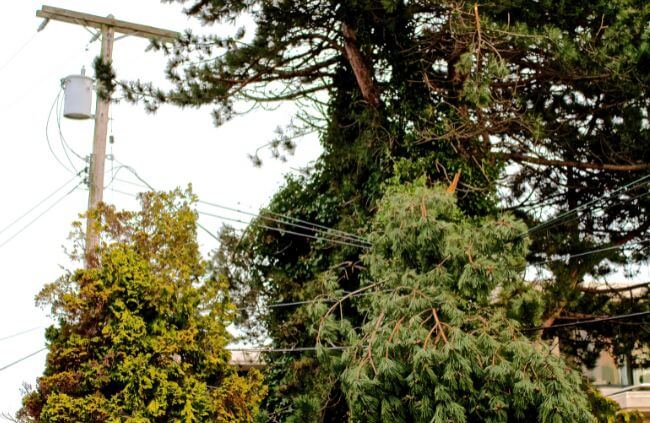
Considerations for Planting Under Power Lines
Planting under power lines isn’t as simple as digging a hole and plonking a tree in it. Here’s what you need to keep in mind:
Height is Everything
Choose vegetation that won’t grow tall enough to interfere with the powerlines once fully mature. Trees that grow beyond recommended heights can cause electrical disruptions, fires, and even structural damage during extreme weather.
Safety Always Comes First
Never attempt to trim vegetation near power lines yourself. It’s dangerous and can result in severe injuries or power outages. Instead, hire a qualified tree-trimming service or consult with your local council. Disruptive vegetation can lead to serious power issues, especially if branches come into contact with high-voltage lines.
Formative Pruning is Crucial
If you do decide on a small tree species, formative pruning during its early growth stages can condition the tree to develop a safer, smaller growth habit. This ensures it maintains a safe distance from powerlines.
Local Council Regulations
Planting guidelines and restrictions vary depending on your state or council area. Always double-check your local rules before deciding what to plant near power lines.
Environmental Factors to Keep in Mind
Certain environmental conditions can exacerbate risks when planting under power lines.
- Storms: High winds and heavy rain can push branches into power lines.
- Extreme Temperatures: Heat can cause power lines to sag, increasing the chance of contact with vegetation.
- Rain and Humidity: Moisture can make powerlines more conductive, heightening the risk of arcing if vegetation is too close.
- Strong Winds: Even small branches can sway into power lines, creating a safety hazard.
Distances When Planting Under Power Lines
Proper spacing is crucial to prevent interference with power lines. While these are general guidelines, consult your local council for specifics in your area:
- Trees up to 3–4 metres tall: Plant these within 3–7 metres of the powerline.
- Trees between 7–10 metres tall: These should be at least 7 metres away from the powerline.
- Trees taller than 10 metres: Keep them 13–15 metres away from powerlines to minimise the risk of falling branches or debris.
Key Features of Vegetation Under Power Lines
For successful planting under power lines, look for vegetation with these traits:
- Indigenous and Native Species – Plants native to your area are better adapted to the local soil and climate, making them lower maintenance.
- Predictable Growth – Choose plants with consistent growth habits and heights. Pay specific attention to the mature height once established.
- Low Maintenance – Opt for species that don’t require frequent pruning or attention. This will greatly decrease the risk of interference with any surrounding powerlines.
- Soil Stabilisation – Plants that anchor the soil help prevent erosion during heavy rains or high winds.
- Wildlife Attractants – Select species that attract birds, insects, and other native wildlife to support your local ecosystem.
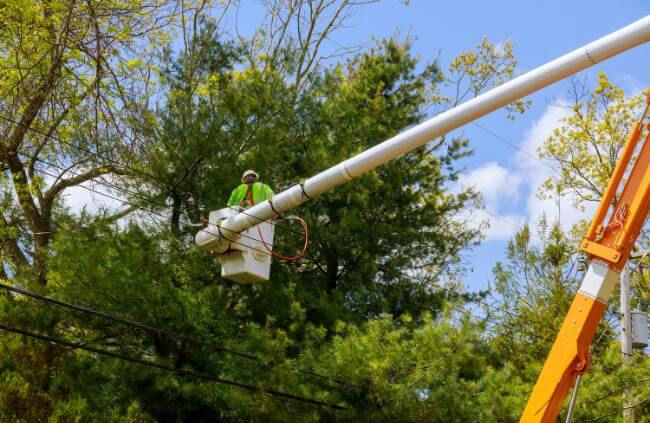
Tips for Proper Maintenance Under Power Lines
- Mulching and Watering – Apply a layer of organic mulch around your plants to regulate soil temperature and retain moisture. Regular deep watering during dry periods will keep them thriving.
- Pruning – Regularly shape hedges and shrubs to keep their growth compact and prevent encroachment near power lines. Formative pruning is essential for young trees to guide their growth.
- Weeding – Remove invasive weeds that can compete for nutrients and potentially grow into powerline space.
- Pest Control – Monitor for pests or diseases that can weaken plants, making them prone to breakage in strong winds.
- Soil Care – Improve soil quality with organic compost or fertiliser to promote strong, stable root systems.
What Plants Can I Grow Under a Power Line?
Here are the best options for trees, shrubs, hedges, and plants to consider for planting under power lines in Australia.
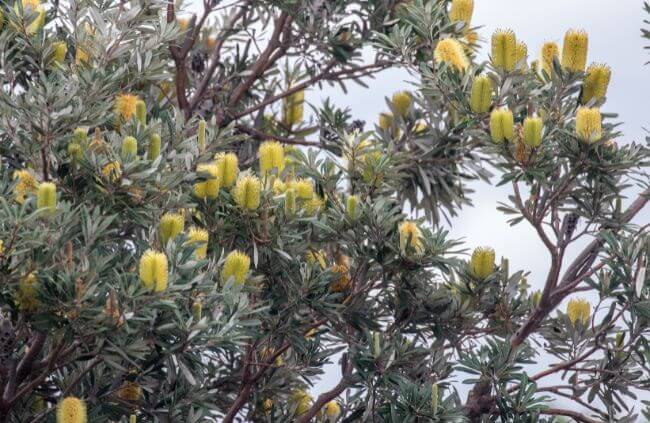
Trees
Banksia spp.
Banksias are hardy native trees that sport iconic yellow or orange flowers. They are drought-tolerant and frost-resistant, making them ideal for most Australian climates. Their slow-growing and compact habit makes them ideal for under power lines.
These species could be great choices:
- Banksia spinulosa
- Banksia ericifolia
- Banksia oblongifolia
Coral Gum Tree (Eucalyptus torquata)
Coral gum tree features stunning pink to red flowers and a small mature height of 4–8 metres, perfect for adding ornamental beauty under power lines. It is also tough, drought-tolerant in nature, does perfectly in full sun and is low maintenance.
Crepe Myrtle (Lagerstroemia indica)
Crepe Myrtle boats prolific summer blooms in vibrant colours. It is deciduous, frost-resistant, and ideal for small spaces. Their mature height of 3–4 metres makes them safe for powerlines.
Small-leaved Lilly Pilly (Syzygium luehmannii)
We all love Lilly Pillies, right? This species has attractive glossy leaves and pink edible berries, making it a notorious bush tucker as well! It thrives in full sun or part shade so it’s adaptable. This species grows to a manageable 4 metres and provides habitat for local wildlife.
Pincushion Hakea (Hakea laurina)
This compact tree produces stunning pincushion-like flowers in shades of pink and white. It’s a low-maintenance option, adapting well to Australian conditions, and supports local birdlife.
Eucalyptus caesia ‘Silver Princess’
This small gum tree is a showstopper with its striking pink flowers and silver foliage. It typically grows no taller than 4 metres, making it an ideal street tree under power lines. Frost-resistant and drought-tolerant, it thrives in full sun and well-drained soil.
Japanese Crabapple (Malus floribunda)
This introduced species is known for its spring display of pink blossoms and small decorative fruit. With a mature height of about 4 metres, it’s suitable for smaller spaces and provides visual appeal throughout the year!
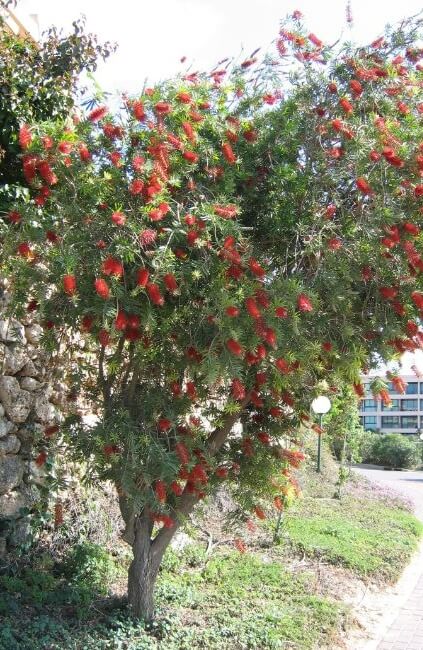
Shrubs
Bottlebrush (Callistemon spp.)
Featuring vibrant red and pink flowers that attract nectar-loving birds, this shrub is a must for underneath power lines! This compact variety grows under 3 metres and is drought tolerant.
You might find these species suitable:
- Callistemon pityoides
- Callistemon comboynensis
- Callistemon subulatus
Grevillea spp.
Enjoy bright flowers in reds, oranges, and yellows that bloom year-round with Grevilleas! They work well for near power lines because they are low-growing and frost-resistant, with varieties suitable for full sun and part shade.
Here are some species we recommend:
- Grevillea crithmifolia
- Grevillea lanigera
Dwarf Magnolia (Magnolia ‘Little Gem’)
The infamous dwarf magnolia sports a compact growth habit, maturing to 7–9 metres tall with fragrant white flowers. This shrub is ideal for smaller yards under power lines.
Hedges
Photinia x fraseri ‘Red Robin’
This prized cultivar has dense, evergreen foliage with striking red new growth. It is absolutely perfect as a striking privacy screen under power lines.
Native Hibiscus (Alyogyne huegelii)
It’s easy to enjoy these beautiful purple flowers with a mature height of 1 to 3 metres. This species has adapted to Australian conditions and attracts local wildlife.
Coastal Rosemary (Westringia fruticosa)
A fast-growing native hedge with silvery-green foliage and pale purple flowers. It’s drought-resistant and thrives in sandy soils, making it ideal for Australian conditions.
Other Plants
Kangaroo Paw (Anigozanthos spp.)
No garden is complete without the iconic, colourful and quirky flowers of the Kangaroo Paw! This species thrives in full sun, is hardy, and low-growing, making it an ideal choice that won’t interfere with power lines.
Grass Trees (Xanthorrhoea spp.)
These striking architectural plants have tall flower spikes, but not to worry, they only reach about 5 metres tall at most. They are extremely low-maintenance and drought-tolerant additions.
Blue Flax Lily (Dianella caerulea)
A hardy groundcover with blue-green leaves and vibrant blue flowers. It’s drought-tolerant and thrives in full sun, offering a low-maintenance option for powerline-friendly spaces.
Why Choose Dave Fenech Electrical Services?
At Dave Fenech Electrical Services, we prioritise your safety and understand the importance of a beautifully landscaped yard. For all your electrical needs, whether it’s dealing with trees near powerlines or any other concerns, give us a call. We’re here to help!
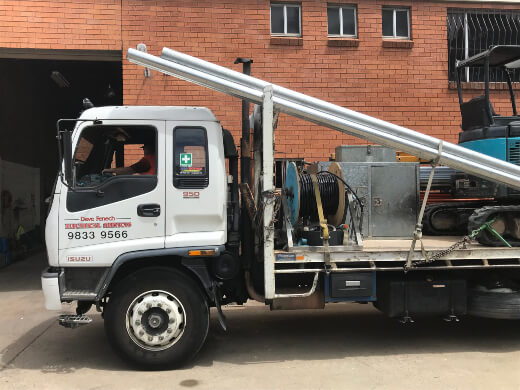
Trees Under Power Lines FAQs
What are the risks of planting tall trees under power lines?
Tall trees can interfere with power lines, causing outages, fires, and safety hazards during storms.
Can I trim trees near powerlines myself?
No, trimming near power lines is dangerous and should only be done by professionals.
How do I choose plants for full sun under power lines?
Opt for drought-tolerant, low-maintenance species that thrive in your local conditions.
Do I need council approval to plant under power lines?
Regulations vary, so always check with your local council before planting.
Final Thoughts on Planting Under Power Lines
When landscaping under power lines, choosing the right plants is crucial for safety and aesthetics. By considering mature heights, local regulations, and environmental factors, you can create a beautiful and safe outdoor space.
For professional advice and electrical services, reach out to Dave Fenech Electrical Services. And if you’re looking for more gardening tips, visit Aussie Green Thumb—your ultimate gardening companion in Australia!
Author Bio:
Hi, I’m Gary Clarke, a gardening enthusiast and former landscaper. Since 2020, I’ve had the privilege of sharing my knowledge and passion for gardening through Aussie Green Thumb. I’m particularly passionate about incorporating native Australian plants into gardens and encouraging the growth of fruit trees and vegetable gardens.
Have any questions, comments, or tips? Feel free to reach out—I’m always happy to connect and chat about all things gardening!

